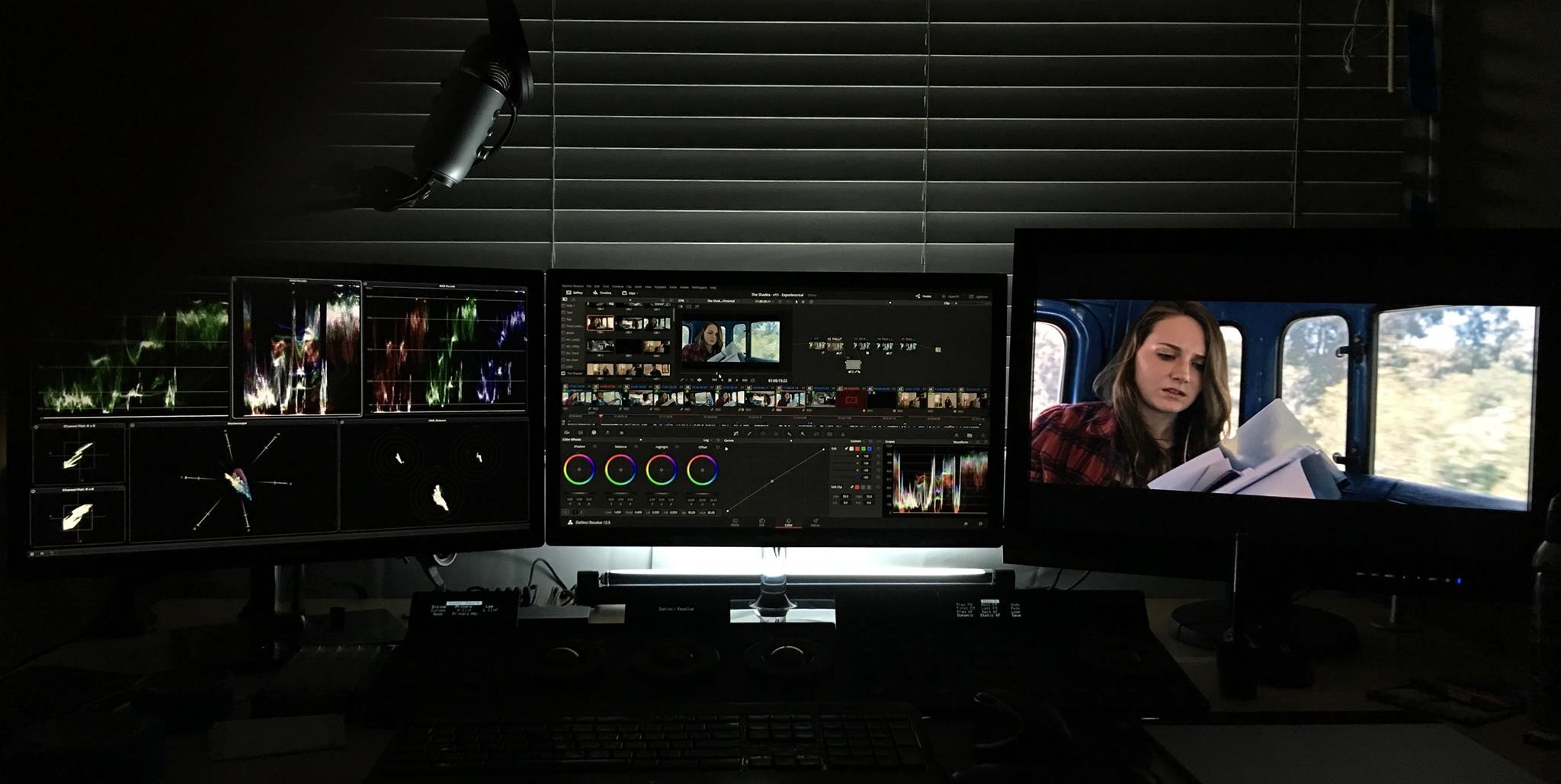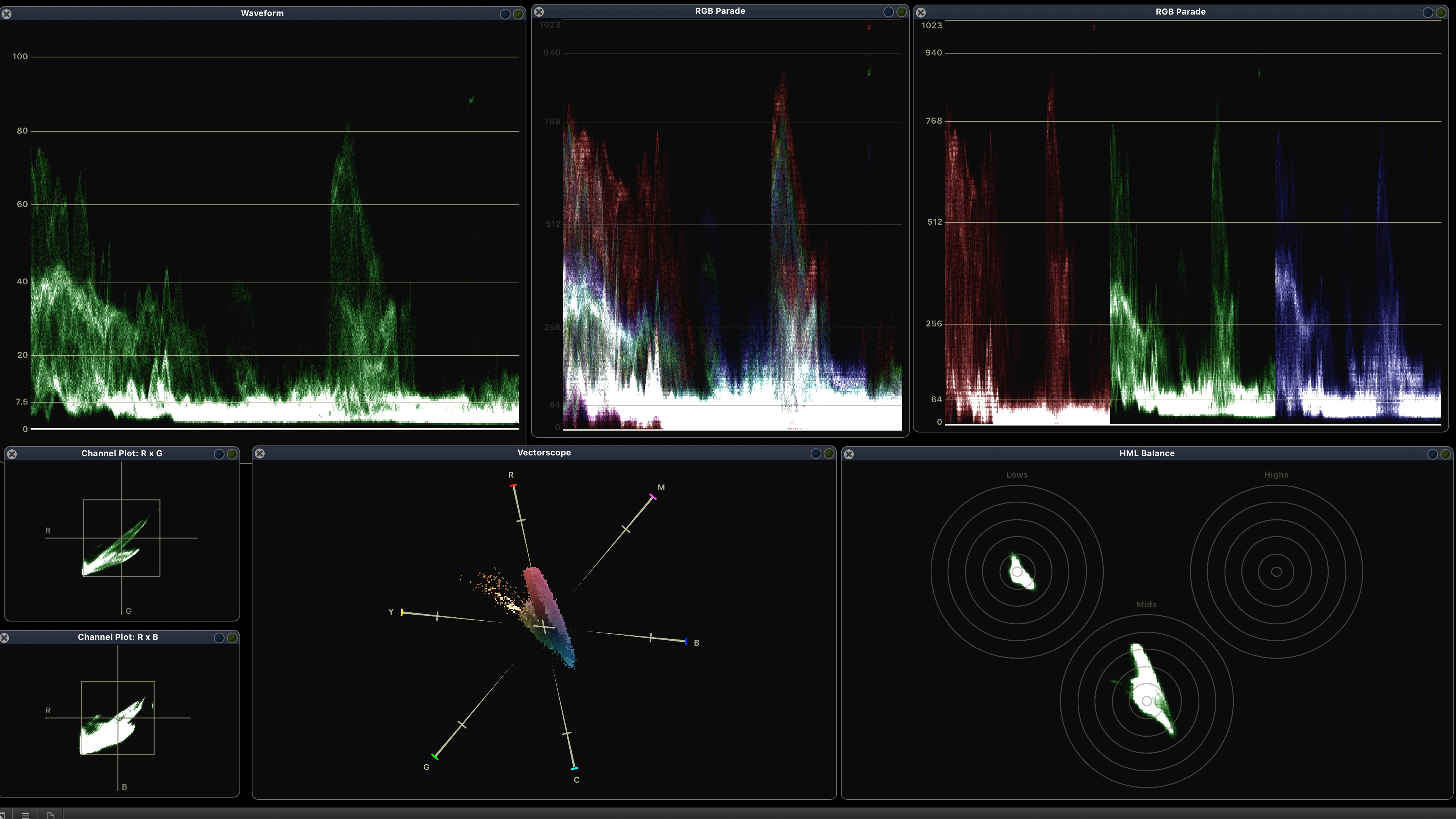ScopeBox Setups — Jason Bowdach

Today we get a tour of the finishing suite of Jason Bowdach, a colorist and finishing artist based in Los Angeles, CA. He started the post production facility, Cinetic Studios, which focuses on end-to-end color & finishing for feature film, television, and web video. They provide post production consultation and services ranging from color grading, texture management, visual effects, and finishing.

Tell us about your setup.
We use a hybrid of Mac and PC systems in our studio, for both application and compatibility reasons. Our main color workstations are Windows-based Xeon machines with Dual Nvidia Titan X GPUs. All media is stored on several RAID arrays built on Hitachi helium-filled 8TB HDDs and Samsung 850 Pro SSDs. We use our Macs to power our video scopes and for network transcoding. We use full Tangent Element control panels for precision and speed. We currently use Eizo reference displays, powered by Blackmagic Decklink 4K cards. For software, we primarily use Blackmagic DaVinci Resolve Studio but also the Adobe CC suite of tools. We use Lightspace for our calibration needs.
How are you running ScopeBox? How are you getting the signal into the software?
We run Scopebox on either MacBook Pros or Mac Minis, relying on a variety of Blackmagic TB I/O cards to capture the signal from our PC workstations. Scopebox is the primary reason why we still have Macs in the studio, aside from ProRes transcoding.

What is your default ScopeBox palette layout and why?
I use a custom layout that consists of an RGB Parade, a Y-Only Waveform, two channels plots, a vectorscope set to Hue Vectors, and the awesome HML Balance. I use that specific layout as it allows me to quickly identify any problems with the image and confirm using a variety of tools.
How do you like to use scopes in coloring? What problems do you find yourself turning to your scopes for most?
I use scopes often during color correction (as opposed to grading), as I always like to confirm what I’m seeing using something measurable. I also use scopes to ensure the image is clearly within any technical standard I’m delivering for, as I don’t like to make assumptions. Balancing a very colorful scene is when I use scopes frequently as our eyes can easily trick our brain. I use the HML Balance to do a black balance pass on almost every program for consistency sake.
What challenges do you see coming up more in the future / how do you think scopes and color correction will change in the next 5 years?
I’m excited to see HDR and similar technologies become more mainstream and widely accepted. I would expect to see an increase in the range of color & brightness palettes used over the next 5 years, but nothing extraordinary as we we can easily be overstimulated to the point of discomfort. I think many colorists were afraid HDR would do exactly that, but as the technology develops, it seems it won’t be that big of a problem.
Thanks Jason! Where can people find you online?
You can follow Cinetic Studios on Twitter, Facebook, & online at www.cineticstudios.com. You can also follow me personally on Twitter @jbowdacious. I also host a live twitter chat on Wednesdays at 5:00pm PST about color and related topics called #ColorChat. Please feel free to join in on the conversation.
ScopeBox Setups is a new series of blog posts where we ask ScopeBox users to send in a photo of their suite and answer a few questions about how they’ve setup their workspace. If you’d like to be highlighted for the series, get in touch!